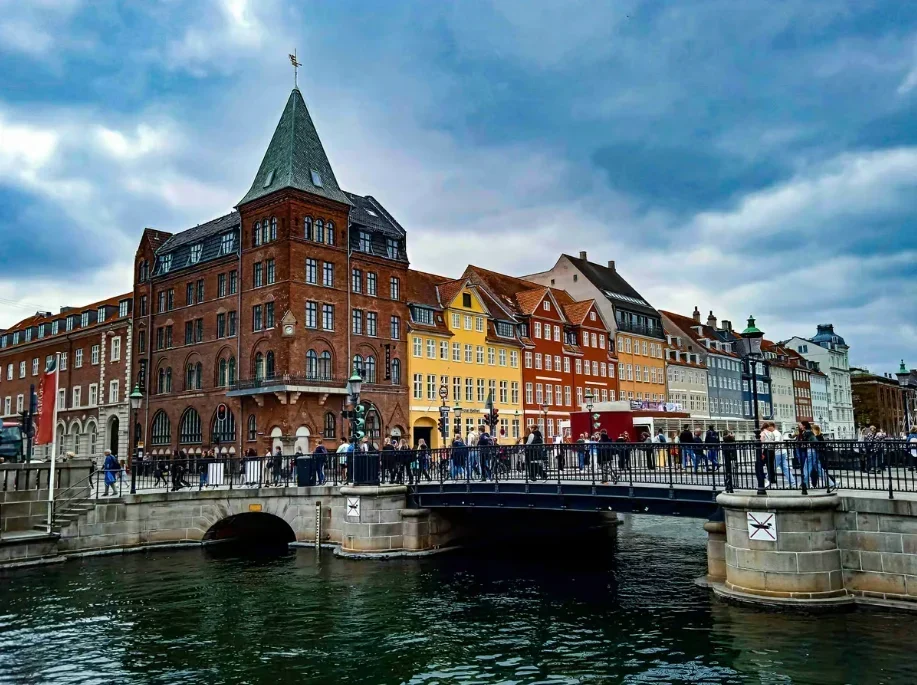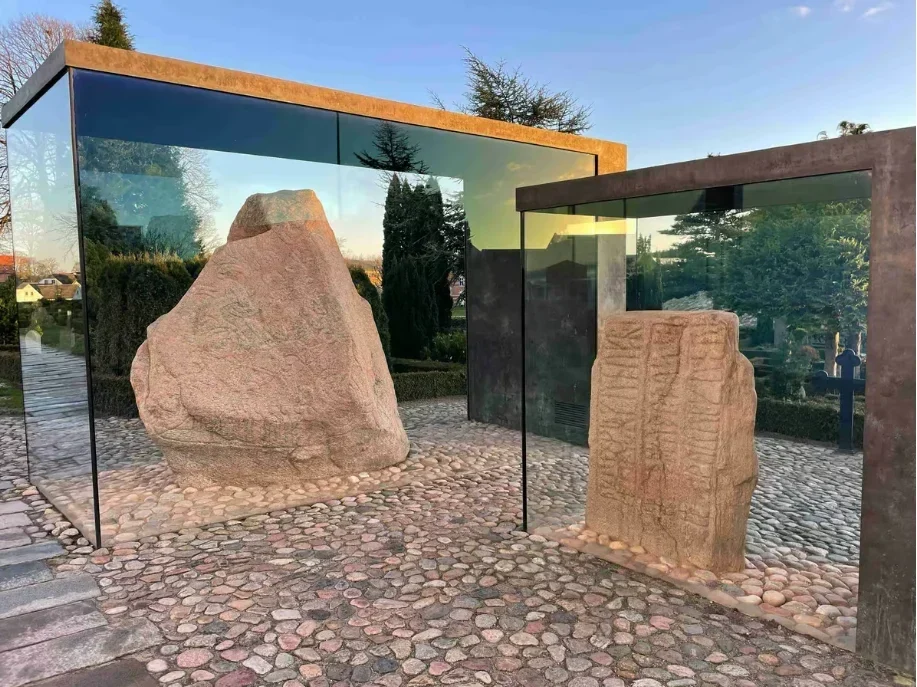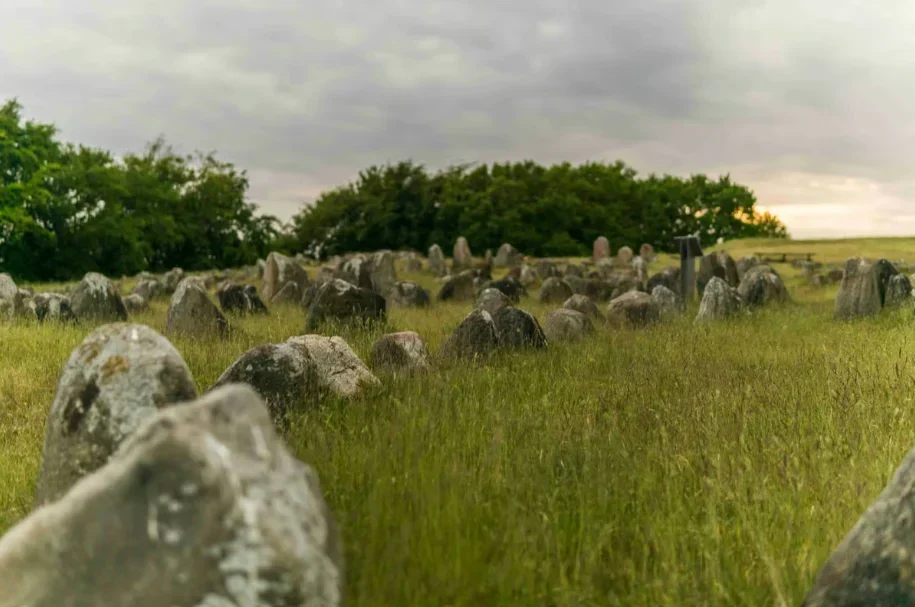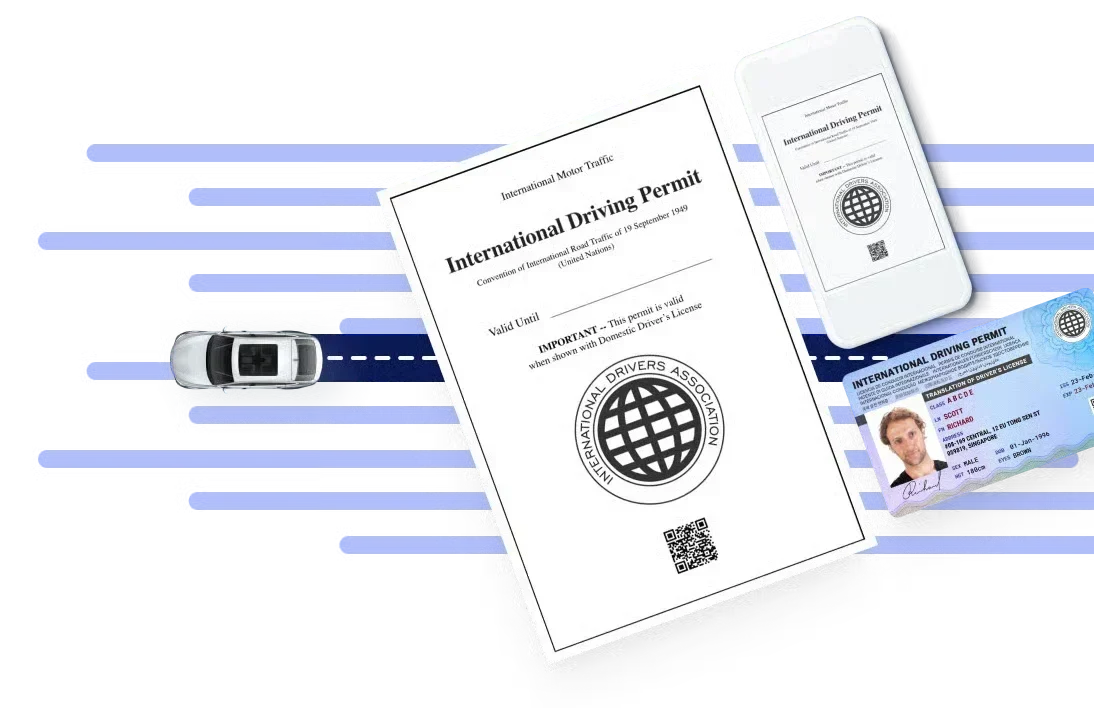Denmark, the cradle of the Viking Age, served as the launching point for the era’s significant developments. It was both the realm of influential kings and the birthplace of many explorers who ventured out to raid, trade, and settle across Europe and beyond.
This road trip guide will take you to ancient landscapes and historic sites that shaped the Viking Age and immerse you in the rich culture this era has left behind. Read on and discover the top road trip destinations in Denmark.

Source: Photo by Oleksandr on Unsplash
Route 1: Eastern Denmark Viking Legacy
Total Number of Days to Explore: 4 days
Covered Locations: Copenhagen, Roskilde, Lejre, and Slagelse
This adventure takes you through key historical sites, including the National Museum of Denmark, the Viking Ship Museum in Roskilde, the Land of Legends in Lejre, and the Trelleborg Viking ring fortress in Slagelse. Immerse yourself in Denmark’s rich Viking heritage while enjoying the scenic beauty and cultural landmarks of this historic route.
Start: Copenhagen
National Museum of Denmark: Explore the Viking exhibits to get an overview of Viking history and artifacts.
The National Museum of Denmark in Copenhagen is the country’s largest cultural history museum. Founded in 1819, it boasts extensive collections, including significant Viking artifacts like weapons and jewelry. The museum provides deep insights into Viking life and broader Danish history, making it a crucial destination for understanding Denmark’s past.
Stop 1: Roskilde
Distance & Driving Time from Copenhagen: The drive from Copenhagen to Roskilde covers approximately 30 kilometers (about 18.6 miles) and typically takes around 30 to 40 minutes.

Source: Photo by Daniel Marshall on Unsplash
Where to Go and What to Do
- Viking Ship Museum: Here, you can see five original Viking ships from the 11th century, providing a glimpse into the maritime prowess of the Vikings. The museum also offers interactive exhibits and workshops to enhance your understanding of Viking life.
- Roskilde Cathedral: Just a short drive from the Viking Ship Museum, Roskilde Cathedral is a UNESCO World Heritage Site and a key historical site in Denmark. The cathedral, the burial site of Viking kings, showcases Denmark’s rich royal history and Gothic architecture. The site provides valuable insight into the lineage of Danish royalty, including figures like Gorm the Old and Harald Bluetooth.
Stop 2: Lejre
Distance & Driving Time from Roskilde: Approximately 15 kilometers (about 9 miles) and typically takes around 20 to 25 minutes, depending on traffic conditions.
Where to Go and What to Do
Land of Legends (Sagnlandet Lejre): In Lejre, the Land of Legends (Sagnlandet Lejre) offers a fascinating glimpse into Viking life with its open-air museum featuring reconstructed Viking buildings. This interactive museum allows you to explore historically accurate Viking structures and experience daily life in the Viking Age.
End: Slagelse
Distance & Driving Time from Lejre: Approximately 50 kilometers (about 31 miles) and takes around 50 to 60 minutes
Located in western Zealand, Slagelse is a historic town notable for its Viking heritage, including the well-preserved Trelleborg Fortress. The town offers a mix of historical charm and modern amenities, making it a key stop for exploring Denmark’s Viking past.
Where to Go and What to Do
Trelleborg Viking Fortress: Located in Slagelse, Trelleborg is one of Denmark’s most well-preserved Viking ring fortresses. Dating back to around 980 AD, this impressive archaeological site is a prime example of Viking military architecture.
The fortress features a circular design, which was a common trait in Viking fortresses, and consists of a massive wooden palisade surrounding a central courtyard.
Hotel and Dining Options
For your journey from Copenhagen to Slagelse, consider staying at Hotel Kong Arthur in Copenhagen, which offers modern amenities in a central location. Once in Slagelse, Hotel Trelleborg provides comfortable accommodation close to local attractions like the Trelleborg Viking Fortress.
For dining, enjoy traditional Danish cuisine at Restaurant Puk in Copenhagen before you depart and savor local specialties at Smedens Spisehus in Slagelse.

Source: Photo by Irina Grotkjaer on Unsplash
Route 2: Jutland’s Viking Heartland
Total Number of Days to Explore: 5 days
Covered Locations: Aarhus, Jelling, Ribe, Aalborg, and Hobro
Jutland’s Viking Heartland is a historic region in Denmark renowned for its rich Viking heritage. Spanning from Aarhus to Hobro, this area features key Viking sites such as the Jelling Stones, Ribe Viking Center, and Lindholm Høje. These landmarks offer a glimpse into Viking life, from royal burial mounds to reconstructed villages.
Start: Aarhus
Distance & Driving Time from Copenhagen: The distance from Copenhagen to Aarhus is approximately 310 kilometers (about 193 miles). The driving time is around 3.5 to 4 hours, depending on traffic and driving conditions.
Aarhus is the second-largest city on the Jutland Peninsula. It is known for its rich Viking heritage and vibrant culture. The city blends historical charm with modern amenities, offering a lively cultural scene and scenic waterfront.
Where to Go and What to Do
- Moesgaard Museum: Explore extensive Viking artifacts and exhibits showcasing Denmark’s Viking history.
- Aarhus Viking Museum: Delve into Viking history with interactive displays and ancient relics.
Stop 1: Jelling
Distance & Driving Time from Aarhus: Approximately 90 kilometers from Aarhus, and the driving time is around 1 hour and 10 minutes. Jelling is located in central Denmark, within the Region of Southern Denmark.
Where to Go and What to Do
- Visit Jelling Stones: Jelling Stones is a UNESCO World Heritage site. These monumental runestones, erected in the 10th century by King Gorm the Old and Harald Bluetooth, mark the transition from paganism to Christianity in Denmark.
- Jelling Church: Built in the 12th century on an earlier Viking church site. The Viking royal burial mounds add to the historical significance, reflecting the area’s role in Viking history and early Christianization.

Source: Photo by Shannon Gahagan Sibbesen on Unsplash
Stop 2: Ribe
Distance & Driving Time from Jelling: Approximately 100 kilometers, with a driving time of around 1 hour and 15 minutes. Ribe is Denmark’s oldest town, located in the southwestern part of the country
Where to Go and What to Do
- Ribe Viking Center: This reconstructed Viking village showcases traditional Viking life. It features interactive displays of crafts, cooking, and daily activities during the Viking era.
- Ribe Cathedral: The cathedral boasts Romanesque architecture from the 12th century.
- Ribe’s Medieval Streets: Explore the charming, historical streets and buildings of Ribe and try some delicacies from quaint cafes and shops.
Stop 3: Aalborg
Distance & Driving Time from Ribe: Approximately 180 kilometers, with an estimated driving time of around 2 hours and 15 minutes. Aalborg is located in the northern part of Denmark, specifically in the North Jutland region. It sits along the Limfjord, a narrow strait that connects the North Sea to the Baltic Sea.
Where to Go and What to Do
Lindholm Høje in Aalborg is a significant Viking burial site with over 700 graves and stone ship settings. The on-site museum offers insights into Viking life, showcasing artifacts, reconstructed burial scenes, and exhibits on daily life during the Viking Age.

Source: Photo by Javier Rincón on Unsplash
End: Hobro
Distance & Driving Time from Aalborg: The distance from Aalborg to Hobro is approximately 45 kilometers, and the driving time is around 35 minutes. Hobro is situated along the Mariager Fjord, providing scenic waterfront views and easy access to historical sites like the Fyrkat Viking fortress.
Where to Go and What to Do
Fyrkat Viking Fortress: This site showcases Viking architecture and lifestyle. Built in the 10th century, it features well-preserved reconstructed longhouses that offer a glimpse into Viking living conditions. Visitors can explore interactive exhibits and learn about the Viking era through displays at the site.
Hotel & Dining Options
For accommodations, stay at Hotel Royal in Aarhus for its historic charm and central location or Himmerland Golf & Spa Resort near Hobro for luxury and scenic views. For dining, try Restaurant Domestic in Aarhus for modern Danish cuisine or Restaurant Rold Storkro near Hobro for traditional fare.
Route 3: The West Coast Viking Voyage
Total Number of Days to Explore: 2 days
Covered Locations: Esbjerg and Kolding
The West Coast Viking Voyage starts in Esbjerg and takes you through key Viking historical sites, ending at a well-preserved Viking fortress. This journey highlights Denmark’s rich Viking heritage and maritime history, a great addition to your Denmark road trip itinerary.
Start: Esbjerg
Distance & Driving Time from Hobro: Approximately 300 kilometers (186 miles). The driving time is about 3.5 to 4 hours.
Where to Go and What to Do
National Park Wadden Sea: A UNESCO World Heritage site closely linked to Viking seafaring routes. This vast tidal area was crucial for Viking navigation and trade. The park offers scenic walks and insights into the historical significance of the region, including its role in Viking exploration and maritime activities.

Source: Photo by Laura Paredis
End: Kolding
Distance & Driving Time from Esbjerg: Approximately 80 kilometers (50 miles). The driving time is about 1 hour and 15 minutes. Kolding is located in southern Denmark, in the Region of Southern Denmark. It lies approximately 25 kilometers (15 miles) inland from the western coast of the Jutland Peninsula, along the Kolding Fjord.
Where to Go and What to Do
Koldinghus Castle: A striking medieval fortress, is central to Denmark’s rich historical tapestry. Dating back to the 13th century, the castle played a significant role during the Viking and medieval periods. Explore the exhibits in the castle, and the panoramic views of the surrounding town.
Hotel & Dining Options
For your trip from Esbjerg to Trelleborg, stay at Hotel Britannia in Esbjerg or Comwell Kolding in Kolding. Dine at Ristorante Due in Esbjerg or Sankt Nikolai Restaurant in Kolding.
Preparing for the Trip
Before your trip to Denmark, here are some of the things you have to prepare for your road trip:
1. Documentation: Ensure your passport is up-to-date and check visa requirements if applicable. Don’t forget your driver’s license and any necessary international driving permits.
2. Vehicle Readiness: Arrange for a reliable rental car or prepare your own vehicle, making sure it is in good condition and equipped for driving in Denmark. Check the insurance coverage and roadside assistance options. Getting to Denmark from point A to B is easy if you have a rented car.
3. Road Rules: Familiarize yourself with Denmark’s driving laws and regulations, such as speed limits, parking rules, and the use of safety equipment like seat belts and child seats.
4. Navigation: Prepare a GPS device or download offline maps on your smartphone. Plan your route, including key stops and attractions related to Viking history.
5. Accommodation: Book accommodations in advance, especially if you plan to stay near popular sites or during peak travel seasons.
6. Packing Essentials: Pack appropriate clothing for varying weather conditions, a first-aid kit, and any personal items you may need for the journey.
7. Currency and Payments: Ensure you have some Danish kroner for small expenses, though credit cards are widely accepted.
8. Local Customs: Learn a few basic Danish phrases and cultural etiquette to enhance your travel experience and interact more effectively with locals.
With these preparations, you’ll be well-equipped to enjoy a seamless and memorable exploration of Denmark’s Viking heritage.
Driving and Car Rental in Denmark: What You Need to Know
Driving License Requirements
To rent a car in Denmark, you must have a valid driving license. If you’re from a European country or the UK, your standard driving license is accepted. Visitors from outside of Denmark should carry an International Driving Permit (IDP) along with their driving license.
Driving Tips and Rules
Danish driving regulations require you to drive on the right-hand side of the road. Familiarize yourself with the rules of the road, such as giving way to pedestrians and cyclists, and the strict regulations regarding the use of daytime running lights. Remember to overtake on the left and give way to traffic at junctions and bus stops.
Vehicle and Fuel
When renting a car in Denmark, ensure it is suitable for your needs. Whether you’re exploring Jutland, Funen, or cities like Aarhus and Odense, you’ll need to refuel with petrol or diesel. Be aware of fuel station locations and understand the payment methods.
Parking and Stopping:
Parking regulations in Danish towns and cities are strictly enforced. Always check local signs and pay attention to parking zones. In built-up areas, parking is often regulated with time limits and fees, so ensure you follow the rules to avoid fines.
Safety and Equipment:
For safety, ensure your vehicle is equipped with mandatory features, including approved safety seating devices for children and a spare tire. Driving under the influence is prohibited, and maintaining a license that meets the height and weight specifications is compulsory.
Good to Know Before You Go:
- Tipping: Not necessary in Denmark as service charges are included in bills. This applies to restaurants, taxis, porters, bartenders, and other service personnel.
- Clothing: Fashion is stylish yet casual; jeans and comfortable shoes are common. Women frequently wear dresses, and nylon stockings remain popular.
- Cultural Values: Danes prioritize simplicity, politeness, and equality. They value a modest lifestyle over material wealth.
- Greetings: A handshake is the norm. It’s considered impolite to start conversations on public transport.
- Privacy: Respect personal space and avoid peering into open windows of homes.
- Pets: Admire dogs from a distance; avoid interacting without permission.
- Weather: Generally cool, even in summer. Pack layers to accommodate variable conditions.
- Language: Most Danes speak excellent English.
- Alcohol: Spirits are costly; beer is more commonly consumed.
- Smoking: Restricted in most restaurants and tourist spots.
- Safety: Denmark is considered very safe.
FAQs
Do I need an international driving license to drive in Denmark?
No, a valid driving license from your home country is sufficient. If it’s not in English, an International Driving Permit (IDP) may be required. Click here to get your IDP faster.
Are there tolls or road fees in Denmark?
There are no general road tolls, but the Øresund Bridge to Sweden has a toll fee.
What about parking regulations?
Parking is regulated; always check for signs and use meters where required. Parking is not allowed in prohibited areas marked with red and white triangles.
When is the best time to visit Denmark?
The best time to visit Denmark is summer (June to August). During this period, you’ll enjoy warm temperatures, long daylight hours, and numerous outdoor events, making it ideal for exploring cities, beaches, and the countryside.
Wrapping It Up
Taking a historical Viking road trip in Denmark is an enriching experience that immerses you in the country’s fascinating past. Traveling through Denmark’s scenic landscapes while exploring its Viking heritage offers a unique glimpse into ancient history and culture. Denmark is a wonderful travel destination with its rich history, friendly locals, and excellent safety standards.
Although the weather can be unpredictable and some costs might be higher, the overall experience of discovering Denmark’s cultural and historical treasures makes it a rewarding journey.






